The history of boats can be traced back to the dawn of time. It all started with the first wooden boat that was built by people who lived on the shores of Lake Victoria in Africa. This boat was made from a single piece of wood, and it was used by the locals to transport goods and people across the lake.
A boat is an amphibious vehicle that can float on water and land. It has two wheels at the front, one wheel at the rear, and a float at the front of the boat, which is spread on an inflatable rubber cushion between water and ground. The boat is equipped with many additional accessories, like an anchor, rope ladder, craft, etc.
If you are interested in vintage boats, you’ve come to the right place, as this article will show you twelve of the oldest boats in the world.
12. Maasilinn Ship
Year of Construction: 1550
Type: Transport Ship
Period Built: Saaremaa
Length: 16 meters
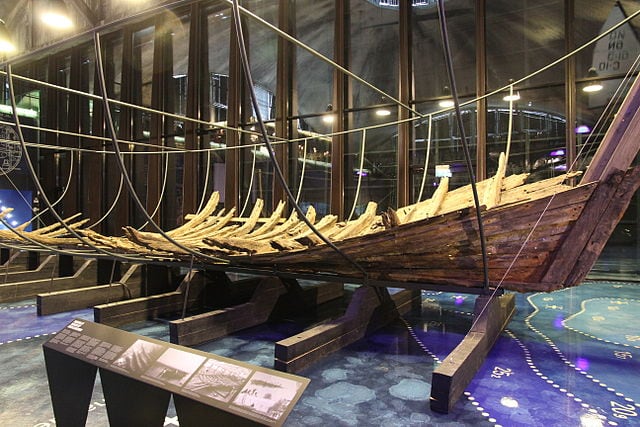
This building includes a typical shell-first, clinker-built design that was later updated with a second layer of flush-laid boards. From the late 16th to early 17th centuries, only three such wrecks are known: one in the German seas, two in Polish waters, and Debki in the early 17th century.
Did You Know?
The earliest “converted clinker” building to date is the Maasilinn wreck from the island of Saaremaa, Estonia.
11. Ma’agan Michael Ship
Year of Construction: 400 BCE
Type: Tradeship
Period Built: Palaestina Prima
Length: 25 meters
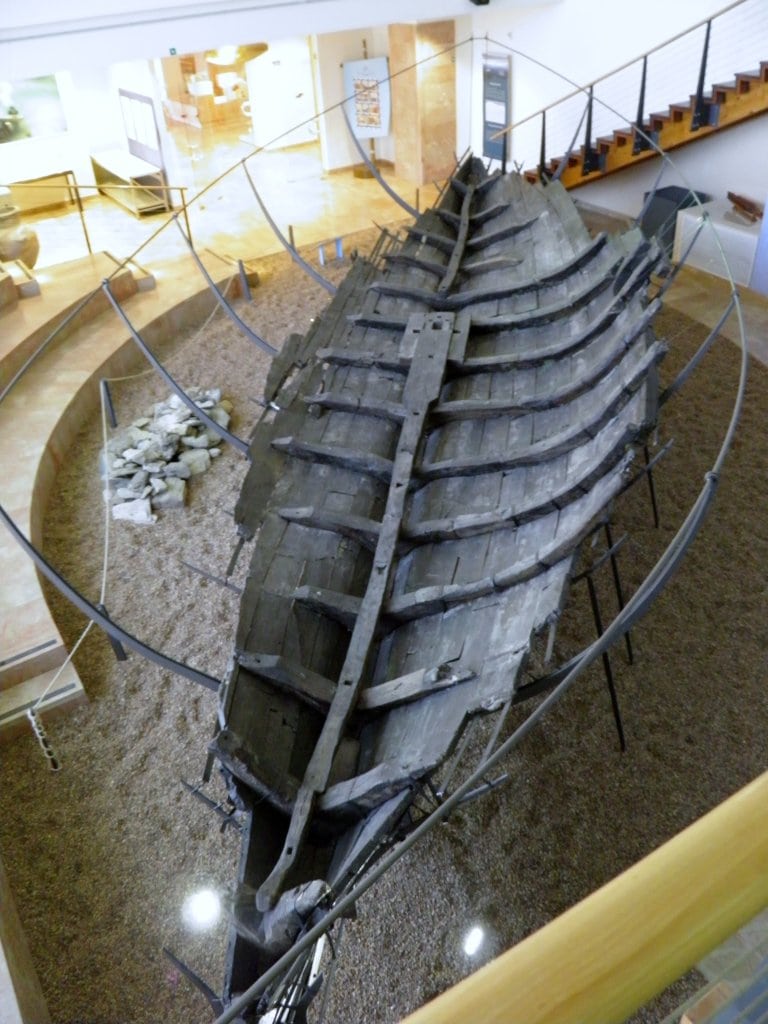
The Ma’agan Mikhael B shipwreck, which dates to the seventh through ninth century CE, is the wreckage of a 25-meter-long commerce ship. A maximum water depth of 3 m and 1.5 m of sand cover the wreckage, which is situated around 70 m off the coast of Israel in the Mediterranean. Prof. Deborah Cvikel has been working on the shipwreck’s excavation for the past six seasons.
The largest pottery collection, which includes sherds, cooking utensils, and whole amphorae, is the most important discovery inside the ship. Glassware, coins, bricks, wooden artifacts, rigging components, and ballast stones are among the other discoveries.
Did You Know?
Due to its provenance, this shipwreck is a unique source of knowledge on a variety of maritime topics, including shipbuilding and seamanship.
10. Carpow Logboat
Year of Construction: 1000 BCE
Type: Logboat
Period Built: Prehistoric Britain
Length: 10 meters
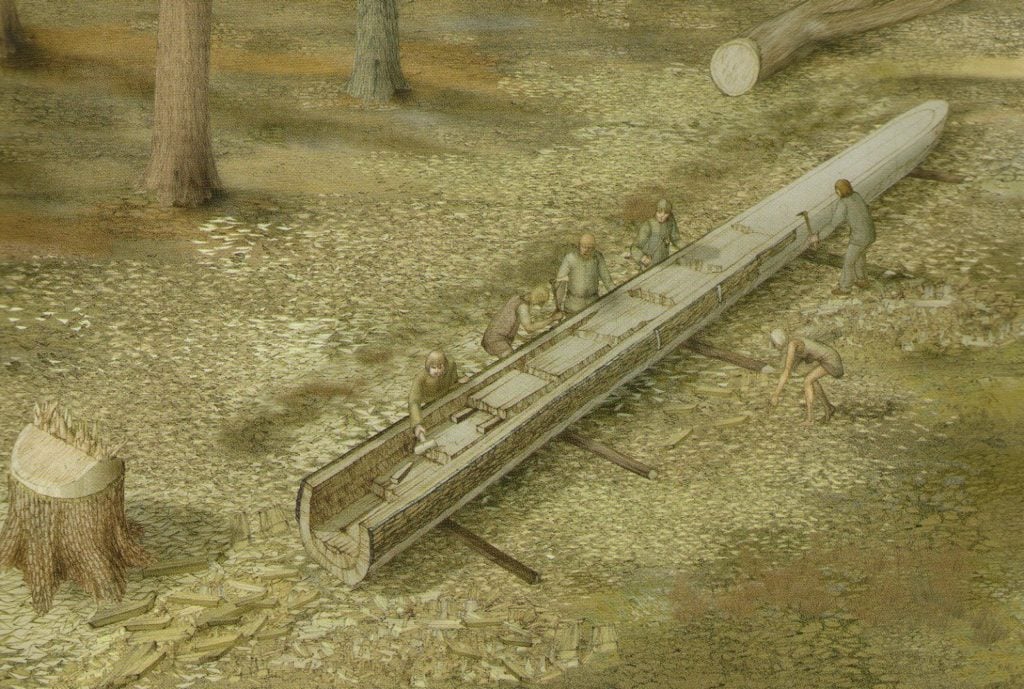
In the Tay estuary close to Perth, the trust unearthed and retrieved a rare late bronze age logboat in 2006. The project, which took more than ten years to complete from the time the boat was discovered in 2001, produced two important publications and an exhibition of the boat at the Perth Museum and Art Gallery.
The 9-meter waterlogged boat from the mighty Tay’s intertidal zone proved logistically difficult, and the National Museums of Scotland’s conservation and study revealed fixtures and fittings, damage, wear, and even tool marks from socketed axes and moss caulking used to make a boat watertight.
Did You Know?
Carpow, the second-oldest boat known from Scotland, is one of the best-preserved ancient log boats from Britain and dates to roughly 1000 BC.
9. Hanson Log Boat
Year of Construction: 1500 BCE
Type: Logboat
Period Built: Prehistoric Britain
Length: 10 meters
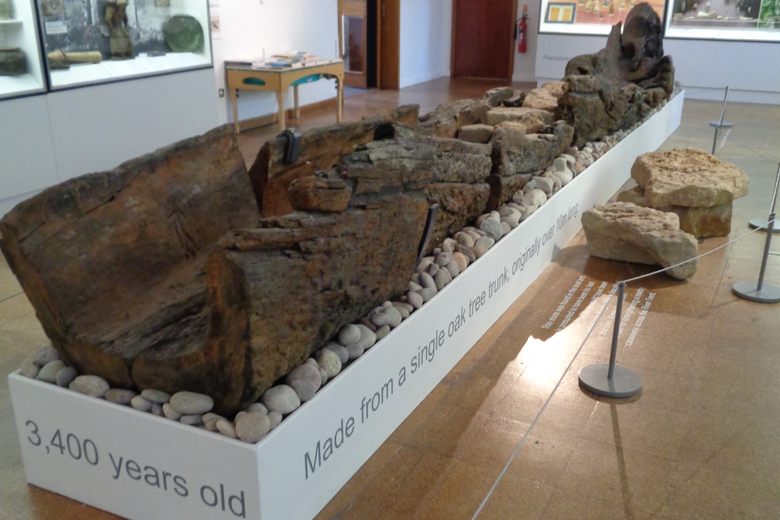
About 3,400 years ago, a single oak trunk that had been hollowed out was used to create this vessel. In Shardlow, Derbyshire, it was found in 1998, buried under a gravel pit next to the River Trent.
In order to strengthen the wood before it could be dried, the boat’s restorers had to submerge it in polyethylene glycol for more than a year after it became waterlogged during its period submerged beneath the gravel.
Did You Know?
The ship’s cargo of sandstone blocks, which came from a local quarry, is on exhibit in the Derby Museum and Art Gallery together with the vessel when it has been put back together.
8. Dover Bronze Age Boat
Year of Construction: 1500 BCE
Type: Seagoing boat
Period Built: Prehistoric Britain
Length: 9.4 meters
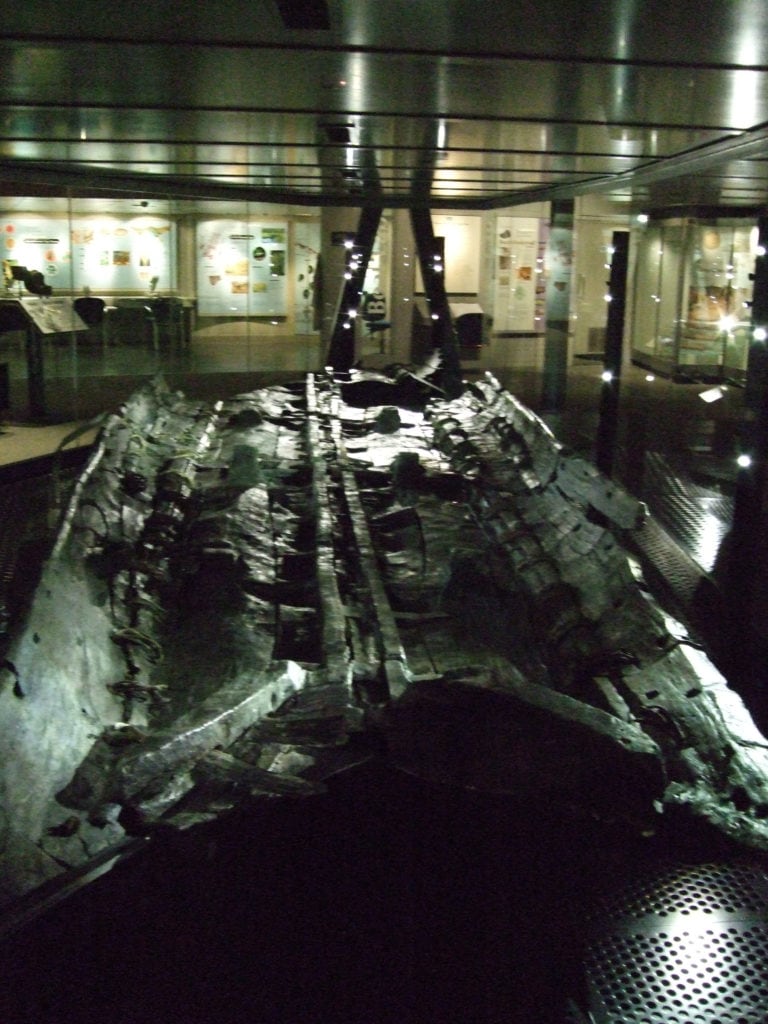
In 1992, there was a historic port of Dover with the channel tunnel, which opened two years later and served as the first land connection between Britain and Europe in more than 10,000 years. Alongside the workers, a small group from the Canterbury Archaeological Trust (CAT) made notes on any fresh finds the machinery had revealed.
A wooden structure was found at the bottom of a deep pit that was located six meters beneath the present-day streets. Archaeologists found its true use after clearing away the soggy site that covered the timbers. The type of silt in which it was submerged had preserved the archaic watercraft that they had discovered. Then the Dover Bronze-Age Boat gave it such a name.
Did You Know?
When it was found, the Dover boat had been smashed, deconstructed, and dumped on purpose; it was not a wreck. Perhaps, like other Bronze-Age artifacts, it had been “ritually slaughtered” at the end of its existence.
7. Dahshur Boat (Chicago Boat)
Year of Construction: 1870 BCE
Type: Solar ship
Period Built: Ancient Egypt
Length: 10 meters
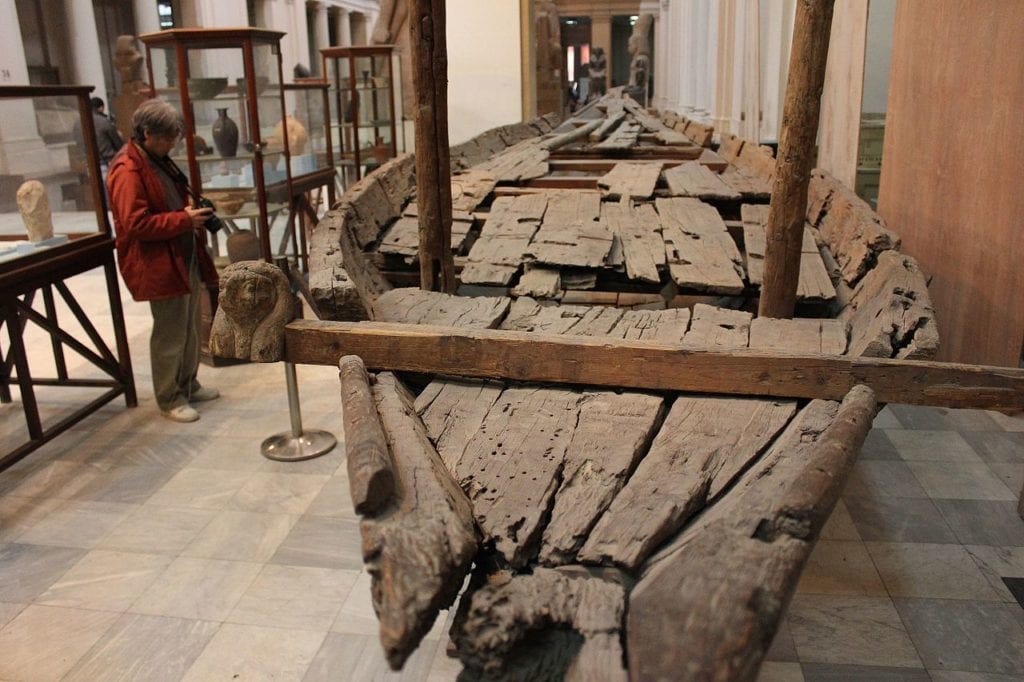
The boats were discovered by French archaeologist Jacques de Morgan during excavations on the plain of Dahshur in 1894 and 1895. Six boats were listed in his initial excavation report, but de Morgan later reported that there were only five.
The body of Senusret III is said to have been conveyed by Chicago boats and other vessels down the Nile, and then by sledges over land to his Pyramid. During de Morgan’s excavations, these sledges were discovered buried near the boats.
Did You Know?
The Field Museum of Natural History purchased the Chicago boat in 1900, and it has been on exhibit there ever since.
6. Carnegie Boat
Year of Construction: 1870 BCE
Type: Solar ship
Period Built: Ancient Egypt
Length: 10 meters
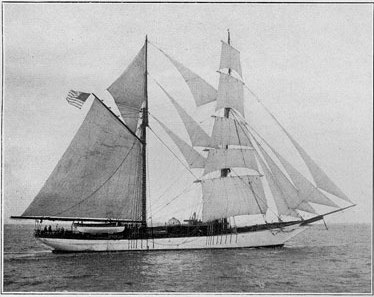
In order to avoid introducing errors into the on-board compass readings, the Carnegie was designed as a nonmagnetic ship with a low amount of ferrous metal. The 155-and-a-half-foot brigantine yacht was built in 1909 and was made of solid oak and Oregon wood. It had a 122-foot foremast and approximately 13,000 feet of layered sails.
James Percy Ault, a renowned scientist who spent his entire professional life working for the Carnegie Institution of Washington, commanded the Carnegie. In 1905, the Carnegie Institution commissioned the Galilee to make the first voyage. In a few years, the Galilee would be replaced by the Carnegie.
Did You Know?
Over the course of 25 years, Carnegie made fundamental contributions to the collection of magnetic maritime recordings, advancing the global search for geophysical understanding and gathering the data required by the scientific community to continue the study of magnetism and oceanography.
5. Lurgan Canoe
Year of Construction: 2000 BCE
Type: Canoe
Period Built: Prehistoric Ireland
Length: 15 meters
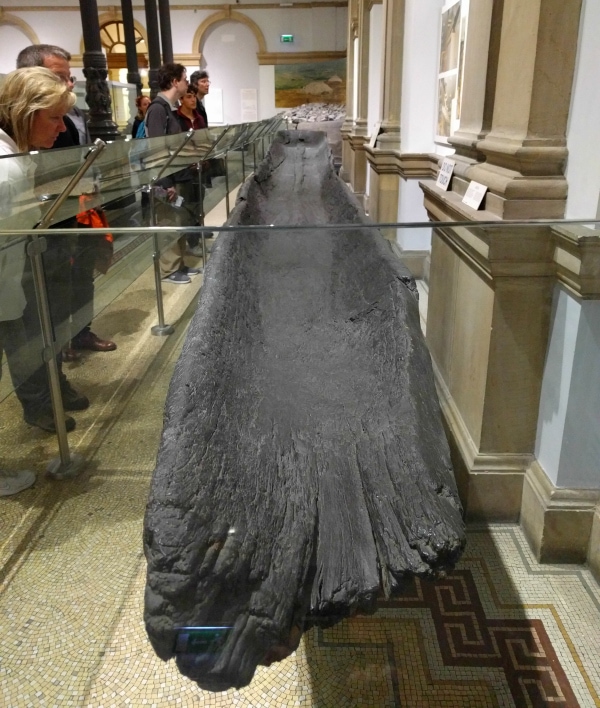
Patrick Coen, who was employed by a company, came upon the Lurgan boat in 1901 in a tiny lake that is now part of the Galway bog. It is approximately 14 m long and 1 m wide, and it is carved from a huge oak tree. The boat was transported quite a distance to be shown in the National Museum of Ireland, Kildare Street, where it is without a doubt the biggest artifact on display.
In the context of Ireland, the Lurgan boat is not unique, and only lately, two quite comparable Early Bronze Age boats were found in this region in north Connacht. One of them is a partially completed boat from County Carrowneden, and the whole ship from Annaghkeen, Co. Mayo, as well as Galway.
Did You Know?
Although it appears doubtful that they were used only for fishing, the original purpose of these enormous boats is still unknown.
4. Khufu Ship
Year of Construction: 2500 BCE
Type: Solar ship
Period Built: Ancient Egypt
Length: 43 meters
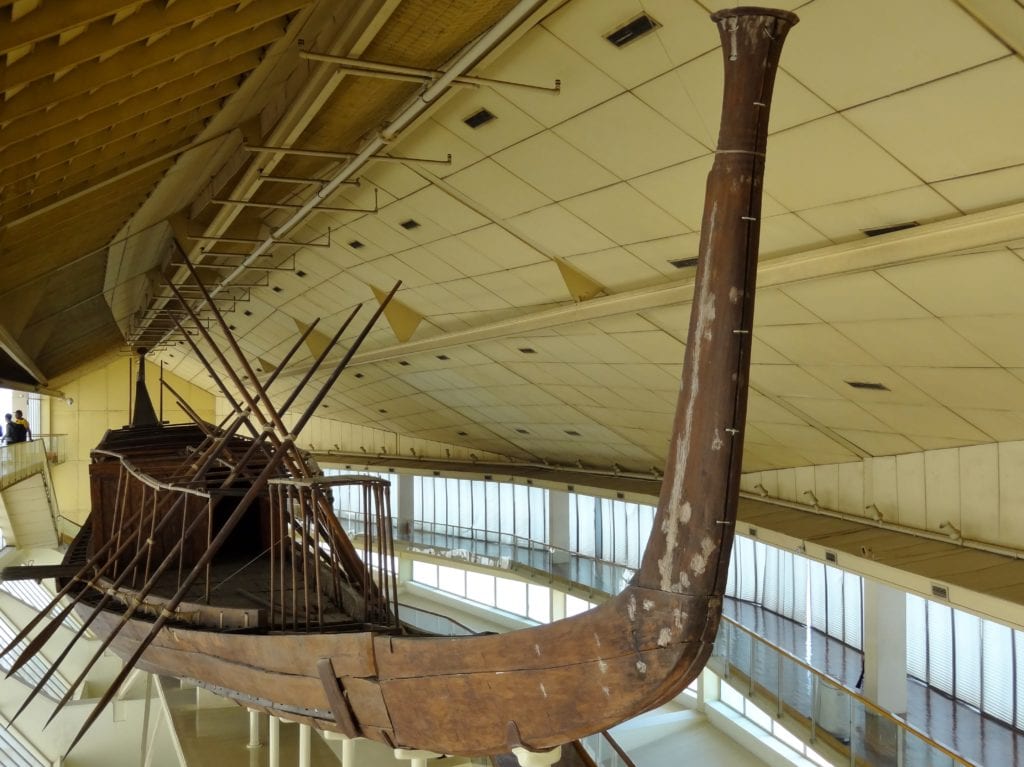
The discovery of King Khufu’s Solar Ship and its artifacts was made by engineer Kamal el-Malakh on May 26, 1954. This was regarded as one of the 20th century’s most significant discoveries.
The discovery of the two holes for King Khufu’s ships, known as the Khufu Solar Ships (2551–2528 BC), on the southern side of the Great Pyramid of Cheops after over 5000 years underground sparked intense attention all around the world.
Did You Know?
This substance was created without the use of even one metal nail. Ropes were utilized by the ancient Egyptians to construct the big ship’s components.
3. Pirogues de Bercy
Year of Construction: 4500 BCE
Type: Canoe
Period Built: Neolithic France
Length: 5.18 meters
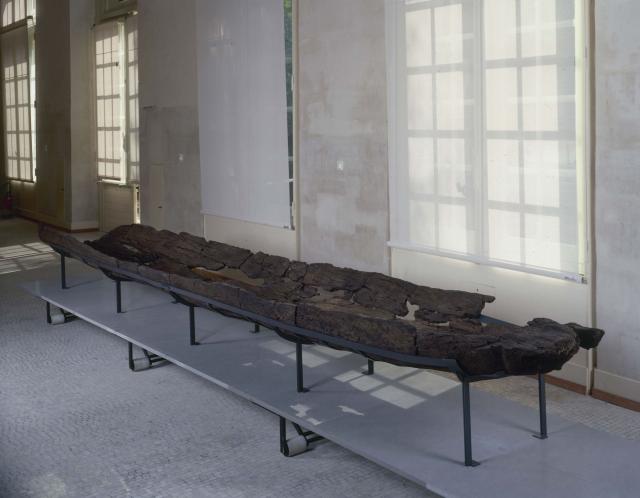
The 12th arrondissement, a neighborhood in southeast Paris, is home to the Pirogues de Bercy, a collection of dugout boats from the Neolithic era that were uncovered in 1989 during building work.
The dugouts and other Neolithic items, including pottery, stone and bone tools, and arrowheads, were discovered at the foot of these accommodations. Because they were carved out of a single tree trunk, the dugouts are known as monoxyls.
This was accomplished first by burning the inside, and then the charred areas were removed using various stone tools. Although they were utilized for fishing, carrying goods and passengers, these dugout canoes may not have been very sturdy because they lacked keels.
Did You Know?
The very thin hulls of some of these dugout boats are another noteworthy feature. The hull base of one of them is barely a little over one centimeter thick.
2. Dufuna canoe
Year of Construction: 6550 BCE
Type: Canoe
Period Built: Neolithic Africa
Length: 8.5 meters
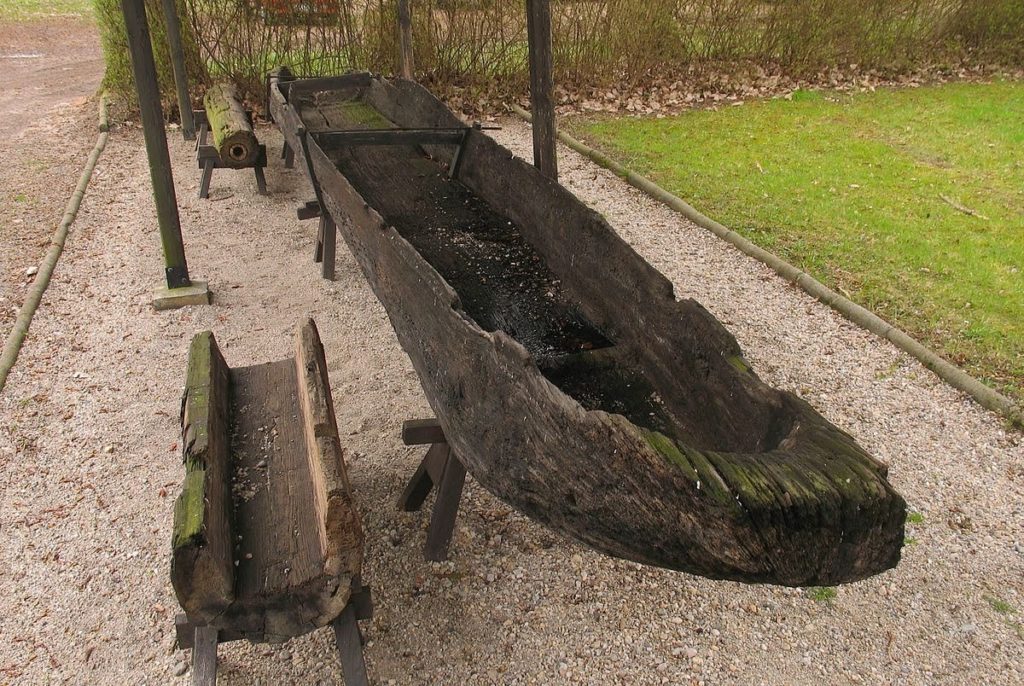
They have never stopped being amazed by the boat that German and Nigerian archeologists discovered together in 1994 at Dufuna, simply because it altered the course of history. Yobe State’s Fune local government region includes the settlement of Dufuna beside the Komodugu Gana river. The boat, which measured 8.4 meters, was retrieved from a depth of five meters below the earth’s surface.
The canoe was formed in the Late Stone Age, a time when people stopped planet hunting and instead became herders and farmers. As a result, they began to modify their environment and develop complex social structures as a result of new issues and strategies for coping with them.
Did You Know?
The Dufuna Canoe is the oldest boat found in Africa.
1. Pesse Canoe
Year of Construction: 8040 BCE
Type: Canoe
Period Built: Mesolithic Europe
Length: 97 meters
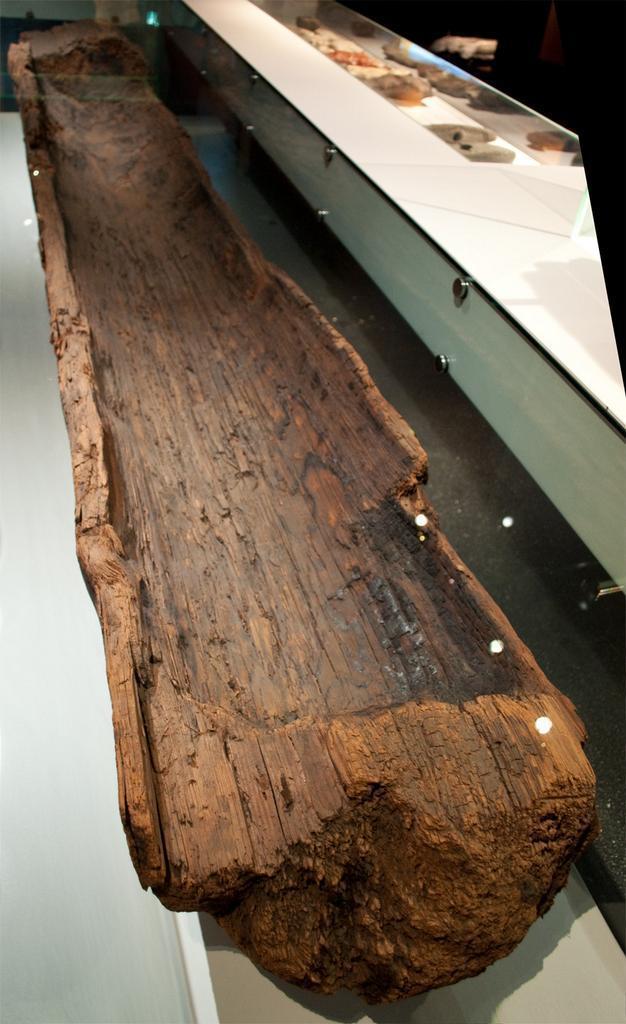
The earliest and what is considered the oldest known watercraft on Earth is the Pesse canoe. It was built in 8040 during the early Mesolithic period and is on display in the Dutch Drents Museum in Assen.
The earliest watercraft ever discovered is a dugout canoe that was discovered close to Pesse. A replica was used in an experiment to demonstrate that it was stable in the water because there were questions about whether it had actually been a watercraft.
Did You Know?
The boat was given the name “Pesse” since it was discovered near the Dutch hamlet of Pesse in 1955 while the Dutch A28 motorway was being built.











